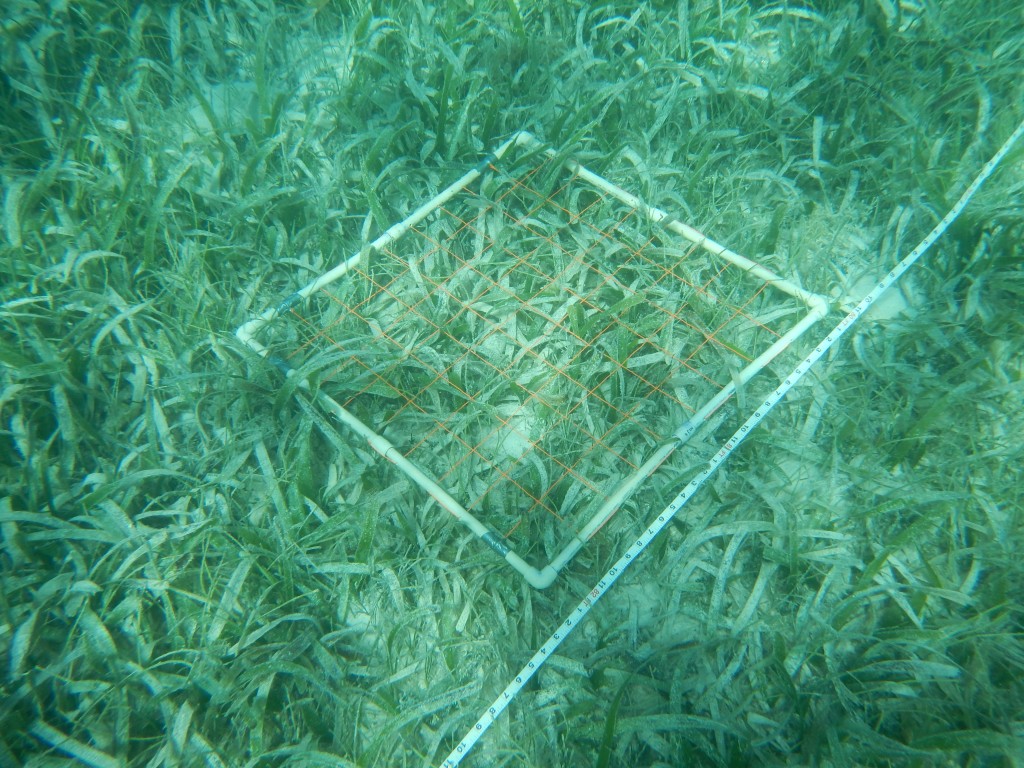We started off this morning with a refreshing snorkel session at 8:30am. This time we brought out more gear, specifically a clipboard with waterproof paper to take notes of what we saw. There was a general feeling among all of us that the waterproof paper had to be some sort of black magic, but it worked so we stopped questioning it. Holding the clipboard and trying to take photos and write notes while avoiding being pushed into the coral by the currents took a long time to get used to, and I definitely haven’t mastered it.

To make everything more confusing, we added more gear after lunch. We performed a short experiment to practice using transect tapes and quadrats. The question that we were trying to answer was whether Halimeda or Penicillus species had a higher abundance and density in the sea grass off of the pier at Middle Caye. We worked in 6 groups to run transects across the beds of sea grass and counted the number of individuals of each species in quadrats along the transects.
In the end, we found 153 Halimeda individuals and only 1 Penicillus individual in the 216 square feet that we measured. We noticed that even slight differences in the composition of the sea grass bed, such as the density or length of the grass, changed the likelihood of algae being found in the plot. To quantify these differences we would have to run another experiment that focused on the different zones in the sea grass bed. Our experiment was limited because of the small area that we covered and difficulty that we had counting the individuals. Even though we were in water that was 8 feet deep at most, it might have been easier to run the experiment using SCUBA so we wouldn’t have to keep surfacing, which made counting confusing when we had to see under blades of grass.
Halimeda and Penicillus are interesting green algae because they are calcareous. Halimeda incorporates calcium carbonate into its thallus in flat chips, whereas Penicillus has calcium carbonate in the brush-like filaments at the top of the algae. The different forms of calcium carbonate lead to different types of sand. Halimeda creates large, flat grains of sand. The sand from Penicillus is finer and muddier.
